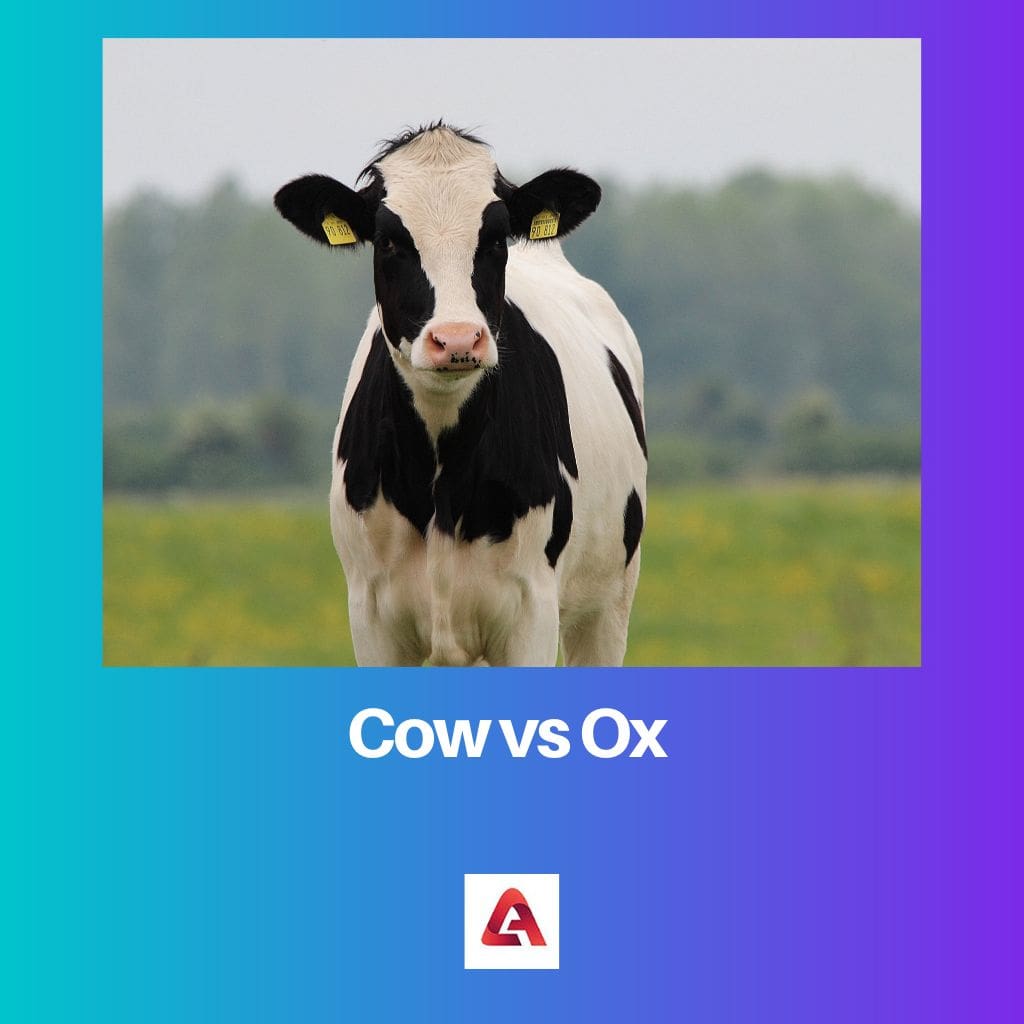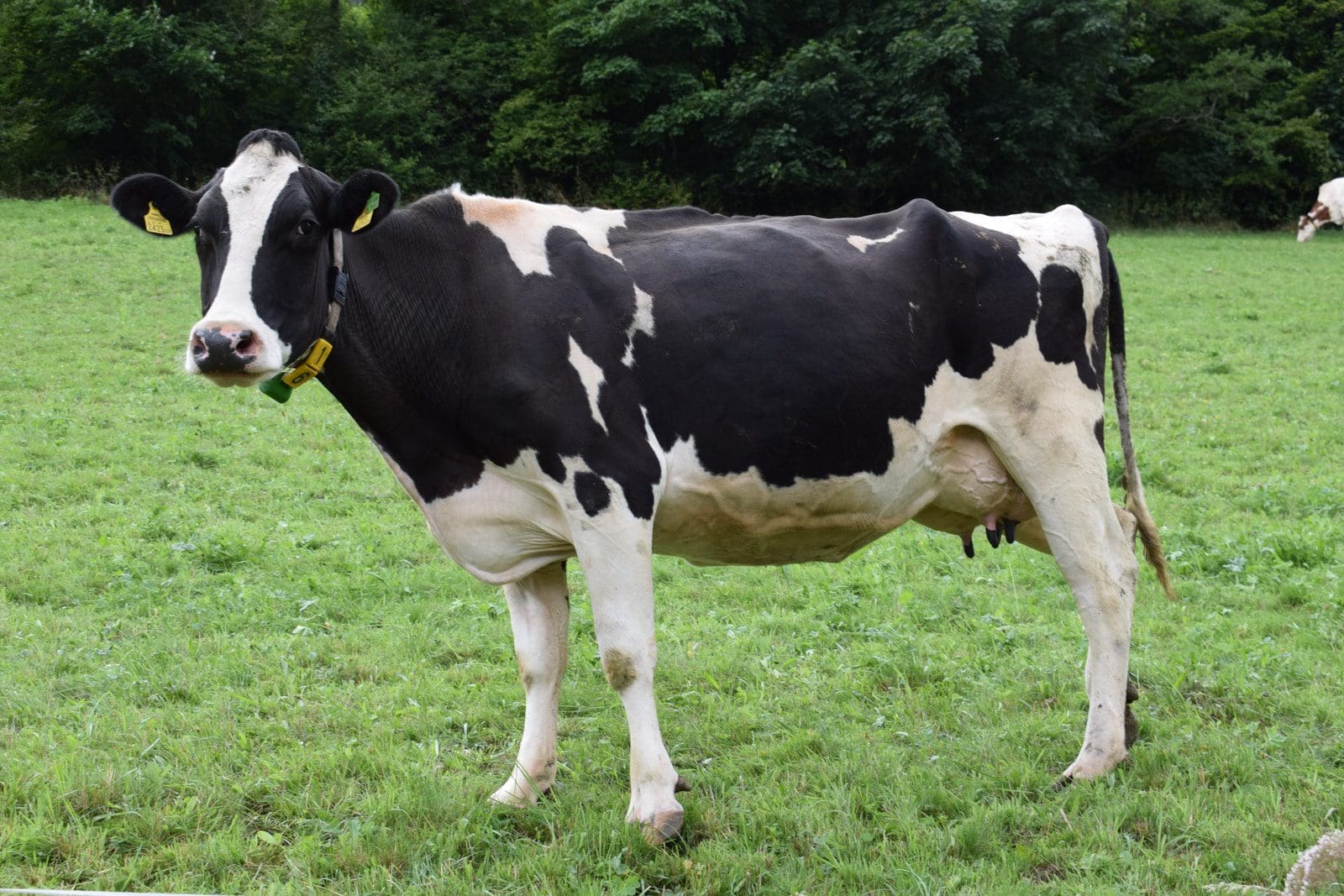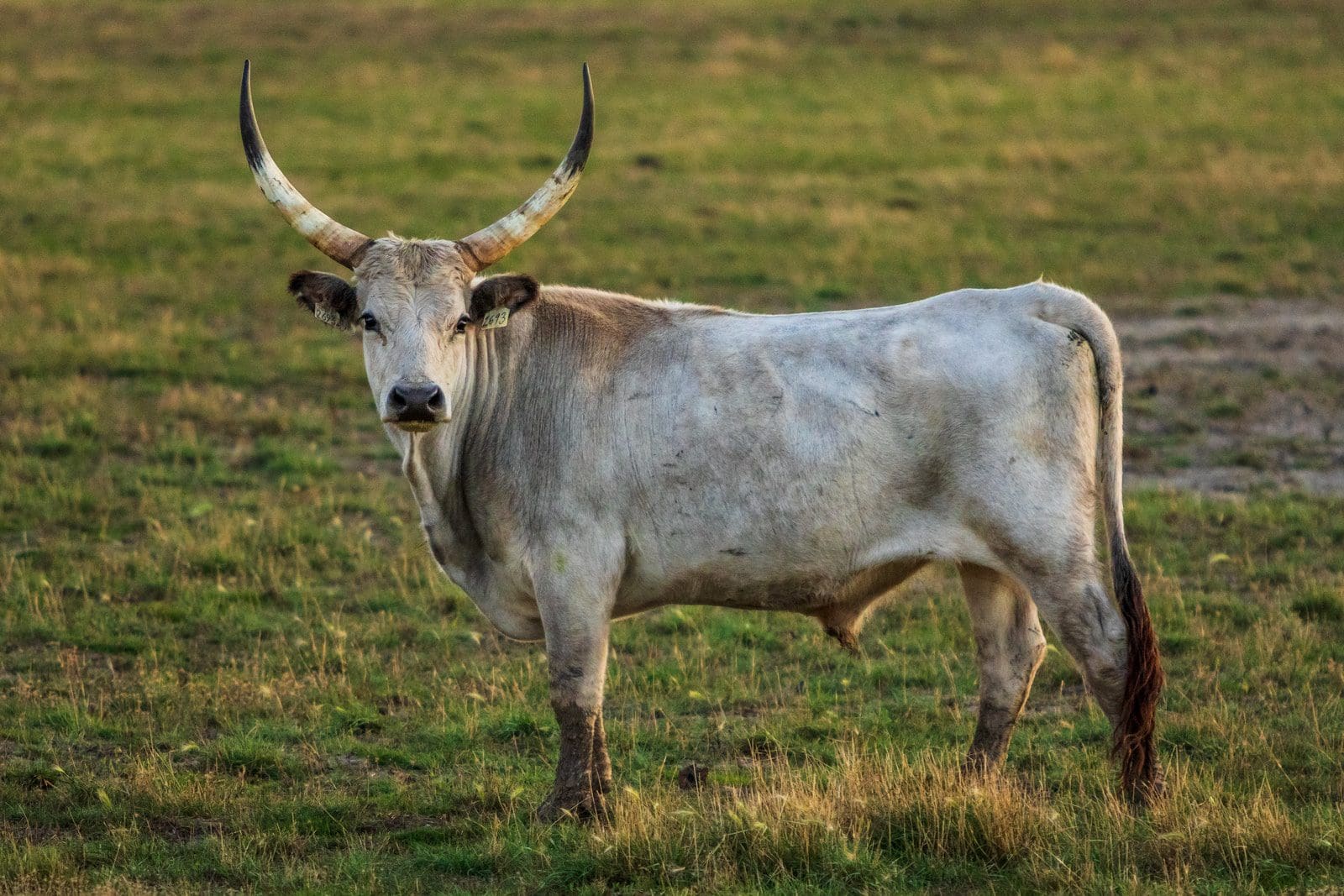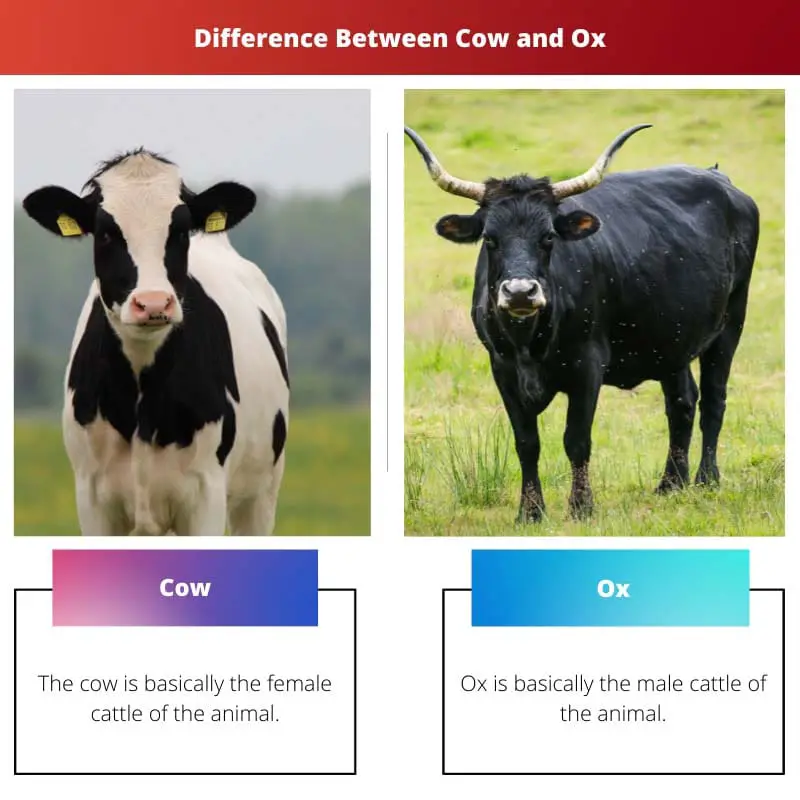There is much confusion between these standard terms, cow and ox.
The difference between cow and ox is very clear among the people, but in between children, there is still confusion about whether they considered both animals the same. So let me tell you that they are different from each other.
Key Takeaways
- Cows are female cattle that have given birth to at least one calf, while oxen are male cattle that have been castrated, specifically trained, and used for draft work.
- Oxen are known for their strength and endurance, making them suitable for heavy labour tasks like ploughing and pulling carts. In contrast, cows are primarily raised for milk production and breeding purposes.
- The term “cattle” encompasses both cows and oxen, as well as bulls (uncastrated males) and heifers (females that have not yet given birth).
Cow vs. Ox
A cow and an ox differ because the cow is a female cattle animal. On the other hand, the ox is a male cattle animal. In simple words, the male cow is known as an ox.

The cow is a large animal that is raised by people so that they can get meat or milk from the farm.
Cows are specially raised as livestock for meat like beef or veal; they are also seen as dairy cattle for milk because people raise adult females of the large animal.
An ox or oxen are cattle that are trained over four years so that they can do the work. Ox is the animal that is prepared to pull plows or carts. Ox is the male cattle that have been catered to. This animal works in a pair.
Comparison Table
| Parameter of Comparison | Cow | Ox |
|---|---|---|
| Gender | The cow is basically the female cattle of the animal. | Ox is the male cattle of the animal. |
| Works | The people raise the cow as the livestock of meat, which is also a source of milk and some dairy products like cheese and butter. | Ox is the draft animal. They are used for plows, sleds, and pull carts and are also used for traditional agriculture. |
| Trained | The animal does not train cows. | Ox is an intelligent animal because people have trained them to do the work correctly, |
| Used for | The owner does not train a cow; they are used for providing the dairy product. | They are trained by the owner and used for traditional agriculture, etc. |
| Physical structure | Cows do not have the muscle like oxen, but they can give birth to at least one calf as female cattle. | Ox is an animal that is muscular, sturdy, and massive. |
What is a Cow?
The cow is the female cattle that can give birth to calves or are two half years old. The cows who are younger and not being able to give birth are called heifers.
In traditional agriculture, cows have been historically and regularly trained to work like an ox. In this way, a family can use these cattle to supply milk, plow the field, and reproduce.
A cow can do the role of oxen, and they also give farmers to choose the work replacement from their animal,
so that the farmer does not have to buy the new males used for training and easily be replaced by the current working animal when they have grown old.
Female cattle that do more than one work are smaller than an ox, but they are very useful for small animals. Cows are cattle that are grown up as livestock meat and also as milk.
As cattle are very useful animals, the other useful thing is their dung, which is used for manure or fuel.

What is Ox?
An ox is also called a bullock in someplace like India and Australia. They are bovine trained for draft animals. They are regularly catered to male cattle because they are easy to control.
In some places, cows or bulls are also used as the replacement for ox. These cattle are used for transport, like pulling carts, riding, and hauling wagons.
The ox is used for threshing grain by trampling, transportation, and powering the machine that grinds grain; they can also supply irrigation for another purpose.
Male cattle are used for skid logs in the forest, particularly in low-impact select-cut logging.
Ox are worked in pairs for easy or light work like bringing household items from the excellent road can be done by one animal, but for heavy work, two animals are needed to do the job.
Nine or ten animals must do the work if they carry a heavy load. They have been trained to respond to the bullock, ox-driver, or teamster signals.
The command is given to them verbally, and a long pole, a whip goad, strengthens body language. In early times the ox-driver was known for their forthright languages and loud voices.

Main Differences Between Cow and Ox
- Both cows and ox are cattle animals that are raised by the people so that they can do work.
- Cows are the female cattle of the animal. On the other hand, the ox is the mal cattle of the animal.
- A cow can give birth, which is called calves. On the other hand, the ox cannot give birth as they are the animal’s male cattle.
- Ox is trained by the people so that they can do the work. On the other hand, the cow is not a trained animal.
- Cows can give a dairy product like cheese, butter, etc. on the other hand; the ox is used for traditional agriculture.
- The people raise the cow as the livestock of meat, which is also a source of milk and some dairy products like cheese and butter. On the other hand, the ox is a draft animal. They are used for plows, sleds, and pull carts and are also used for traditional agriculture.


This article is just stating the obvious, not at all engaging.
I have to agree, this article didn’t bring anything new to the table.
I appreciate the detailed breakdown of the roles and characteristics of cows and oxen but it seems to lack a critical viewpoint.
It’s true. There’s little room for debate or analysis on a topic that is ripe for discussion.
Absolutely, the article feels one-sided and leaves crucial inquiries unaddressed.
I can see the benefits of this informative piece, but the delivery could have been much more engaging.
Adding humor or irony to engage readers is definitely needed.
A lighter writing style would make this heavy subject more accessible.
An interesting take on the subject, would love it to balance the formal tone with some light humor or sarcasm.
Including wit or sarcasm, sparingly, could add a layer of entertainment.
I’d enjoy a subtle hint of irony to liven up this informative piece.
The matter is certainly elucidated, but the absence of relatable anecdotes makes it less compelling.
Definitely. Anecdotes or case studies could bring the informative content to life.
The article would benefit from real-life examples or stories to make it more relatable.
It’s hard not to find the comprehensive nature of the article commendable. However, it could use more engagement with its readers.
The analysis is there, but it lacks relatability.
Fascinating insights. Surprising to see such emphasis on an aspect of farming that is rarely discussed.
This article provides a thorough comparison between cows and oxen. Very informative and enlightening.
Yes, well-sourced information is presented in a clear format.
Exceptionally well-detailed, yet the narrative remains somewhat dry and detached.
More engaging language and a conversational tone would make it a more enjoyable read.
The article fulfills its purpose by presenting a clear demarcation between cows and oxen, although its tone could be less dry and academic.
Agreed. A little more informality and humor would go a long way in making it more enjoyable to read.
There are elements of humor lacking for sure.